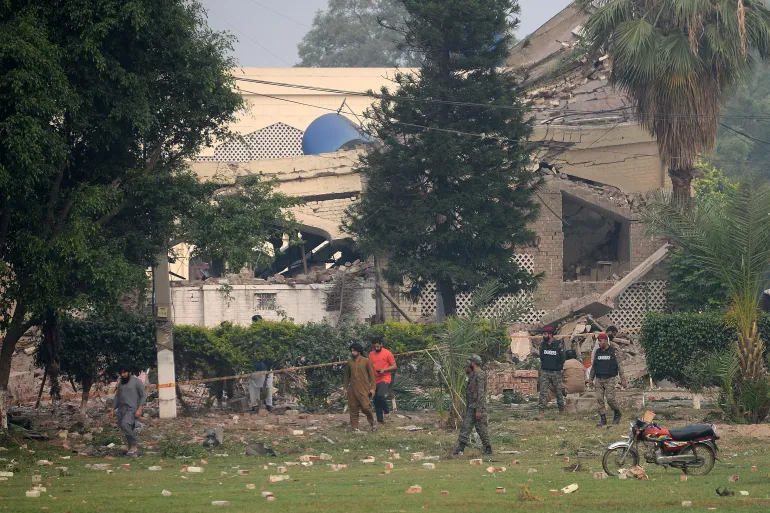By Muhammad Akbar – Societies Germinate Seeds of destruction: Sustainability Crisis
Collapse has a potential to result in the extinction of human population across a vast area. It’s unclear to say whether the major reason of collapse was “purely” military, or if the conquest was simply the last straw for a culture already weakened by mostly ecological factors. Many Polynesian islands are separated by hundreds, if not thousands, of kilometers from the nearest island. As a result, overwater colonists’ Polynesian civilizations lost touch with their ancient parent population and were cut off from the rest of humanity for a thousand years or more. As a result, we may be certain that their fate was unaffected by their environment. Various isolated Polynesian communities had wildly disparate outcomes. Abandoned towns with hundreds of living units, such as the famous ruins at Chaco Canyon in New Mexico, are growing out of our parched deserts today. Modern Indians living in these areas have no connection to the ruins and are unaware of their construction or prior residents, referring to the vanished architects simply as the Anasazi. The Anasazi cities flourished between 900 and 1300 A.D., according to archaeological data. At the time, the land was covered in pinyon/juniper woods, with pine forests nearby. Irrigated field agriculture, nearby woodland firewood, and pine forest construction timber were all utilized to help the city builders. Barbarians from the north and east ravaged Rome, Thais pillaged Angkor Wat, and Indo-Europeans sacked Angkor Wat, Indo-Europeans with cavalry took control of the Indus Valley, and Mexicans may have intruded on the Maya.
Aforementioned narration is gloomy but it is unclear if these military setbacks were the final straw for a society that was already in decline. If the societies had been on Pacific islands, they might have declined in isolation, similar to the Easter Island civilization. After so many years of successfully defeating those opponents, one must still explain why Angkor Wat succumbed to the Thais and Rome to barbarians. Military explanations for the fall of Harappan civilization, which may have occurred prior to the arrival of Indo-Europeans, and the Mayan collapse, which may have occurred prior to the arrival of Mexican intruders, are especially suspect.
Collapse expert and historian Joseph Tainter tried to answer these tricky questions and said that societies always fall under the weight of their own bureaucracy and complexity. Societies are problem-solving collectives that become more complex as new issues are faced. On the other side, the benefits of complexity eventually approach a threshold of diminishing returns resulting in collapse of the system. Climate change is a long-term problem that requires long-term answers from politicians. Major progress toward climate targets, such as attaining 80 percent decarbonization in the United States by 2050, will demand the widespread adoption of new technology. Even if each technological breakthrough is small—lower-cost electric vehicle batteries, connecting the grid to harness Midwest wind potential, cutting offshore wind costs, developing and commercializing low-carbon fuels for transportation—the cumulative effect will be significant.
If a carbon price is not politically feasible—and even if it is—these long-term implications must be factored into our short-term policy compromises. One obvious implication of this study’s cost calculations is that choosing low-cost initiatives with no future, such as those that lock in fossil fuel infrastructure, may lead to an overemphasis on what is cheapest to accomplish right now. The complexities of technological innovation often astound us, but economists must know that when the right incentives are in place, it is more likely to happen. We looked at examples of ancient civilizations that crumbled as a result of (or aided by) self-inflicted environmental destruction. Other collapses, on the other hand, are not regarded to be the result of such events. In other regions, such as Japan, Java, and northwest Europe, complex communities have thrived for thousands of years with no evidence of a catastrophic collapse. Why does it appear that some societies are more environmentally conscious than others? Previous ecological breakdowns may have occurred in regions or climates that we now recognize as environmentally sensitive, as readers may have noticed. Many of the collapses took place in dry areas, such as Easter Island, Kahoolawe, the Anasazi, the Fertile Crescent, Greece, and north-western Africa.
Because vegetation development is usually proportional to rainfall, dry areas take significantly longer to recover from habitat loss than moist places. If re-growth is too sluggish, erosion may remove topsoil and make recovery difficult, as it did on Kahoolawe. Many more collapses happened after humans first populated a region that had previously been uninhabited, such as those on New Zealand’s South Island and Henderson Island. Behaviorally naive animals that have never been exposed to human predators are easily slain by hunters. As a result, the pattern of prior civilizations’ ecological collapses is well-known, if not widespread. In fact, societies in more fragile ecosystems are more likely to collapse owing to resource depletion. Many human societies now are wreaking havoc on sensitive environments with far greater human numbers and far more destructive technologies than previously sufficed to do so. These environments can be found over the West Coast of the United States, the Himalayas, and Africa.
However, this rationale should not be used to claim that modern cultures in more ecologically stable locations are safe. All countries today rely on other countries for economic resources such as food and energy, unlike the Easter Island community, which was entirely self-sufficient for 1,500 years. All countries are now linked by the fact that they all share the same progressively polluted atmosphere and oceans. In the future century, we will encounter more than just cultures in fragile places collapsing one by one. We also have the danger of global society crumbling, which has already begun to show warning signs. Surprisingly, many knowledgeable people who should know better downplay the seriousness of the impending hazards. People like this may learn a lot from history. Many societies that were not as fragile as ours have already fallen apart.
Muhammad Akbar is a civil servant.
More articles: https://republicpolicy.com/global-warming-myth-or-reality/















